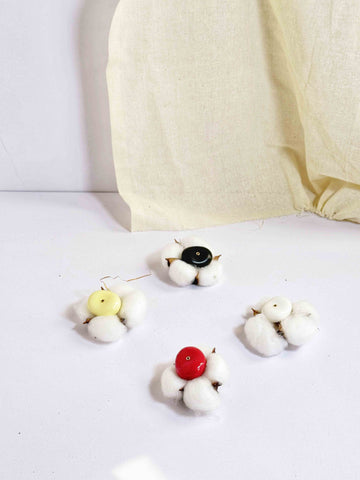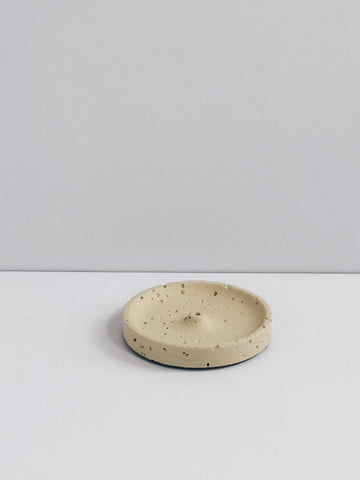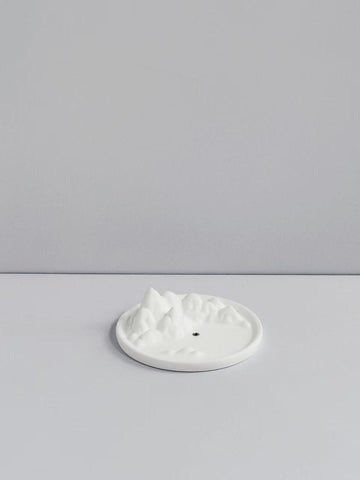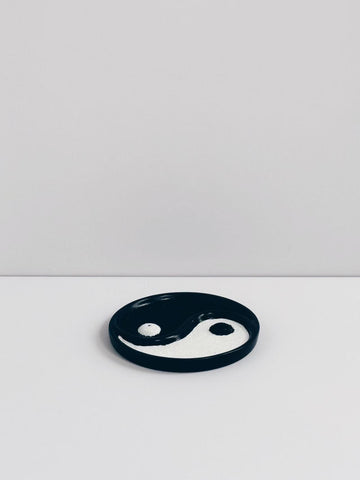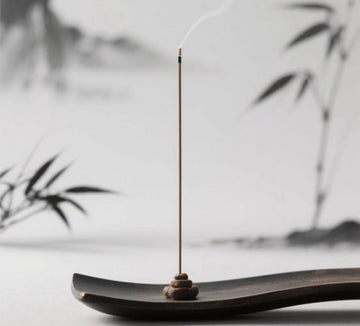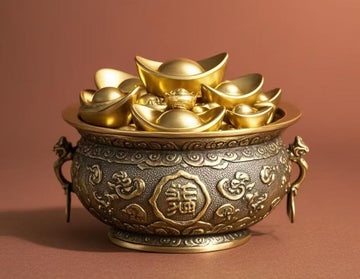The Mystery Behind Three Sticks of Incense
In many Chinese temples and households, it's common to see people standing before an altar, hands clasped around three burning incense sticks, eyes closed in silent prayer. For those unfamiliar with the practice, this ritual may seem mysterious or even superstitious. However, burning three incense sticks is far from a random tradition. It is deeply rooted in Chinese cosmology, ancient wisdom, and spiritual philosophy. From invoking harmony among the cosmos to marking time throughout the day, the act of offering incense—especially in groups of three—holds profound meaning.
This blog post will explore why three incense sticks are burned in Chinese rituals, how numbers like five, seven, and nine relate to spiritual symbolism, and why incense remains a vital part of Chinese daily life. Along the way, we’ll touch on the role of Feng Shui, ancestral worship, and how the quality of incense itself reflects both tradition and modern refinement.
The Significance of the Number Three in Chinese Spiritual Life
In Chinese cosmology, the number three holds extraordinary weight. It symbolizes the Three Realms: Heaven (天), Earth (地), and Humanity (人). These three forces are the foundation of universal balance. In Feng Shui, this triad is essential for achieving what the Chinese call "天时地利人和"—Heaven’s timing, Earth’s advantage, and Human harmony.
Burning three incense sticks is a physical representation of this harmony. When individuals offer incense at an altar, they are not just communicating with one spiritual entity; they are aligning themselves with the universal forces that govern all aspects of life. Each incense stick represents one realm. By burning three simultaneously, the practitioner pays equal respect to the heavens, the earth, and their own human spirit, inviting divine order into their daily existence.
In spiritual practices, the balance of these three realms is believed to improve fortune, health, and clarity. Important life events such as weddings, funerals, and business openings often begin with this offering, underscoring the depth of this triadic ritual.
Five Incense Sticks: The Five Directions and the Five Elements
While three incense sticks are most commonly used, five incense sticks are also burned during more elaborate ceremonies. In this context, the number five symbolizes the Five Directions: North, South, East, West, and Center. These directions correlate with the Five Elements in Feng Shui: Metal (金), Wood (木), Water (水), Fire (火), and Earth (土).
Each element governs different aspects of life—Wood symbolizes growth and creativity, Fire governs passion and transformation, Earth grounds and stabilizes, Metal brings clarity and discipline, and Water nurtures intuition and emotion. Offering five incense sticks serves as a ritual to align the elements and balance the directional energies. This is especially important in Feng Shui, where harmony between these elements is considered critical to physical and spiritual well-being.
In Taoist temples or during major ancestral ceremonies, five sticks may be used to invite protective forces from all cardinal directions. It is a comprehensive spiritual gesture meant to safeguard the physical environment and the energy field surrounding it.
Seven and Nine Incense Sticks: Personal Prayers and Spiritual Power
In some spiritual and ceremonial contexts, people may burn seven or nine incense sticks, especially when making personal requests or seeking divine intervention.
The number seven is believed to represent a higher spiritual vibration, closely linked with intuition and inner guidance. When individuals feel spiritually vulnerable or wish to connect more deeply with deities, seven incense sticks are offered to elevate their prayers.
The number nine, meanwhile, is regarded as the number of completeness and longevity in Chinese tradition. In the ancient Chinese numerology system, nine is the largest single-digit number, and therefore symbolizes the peak of spiritual power. Burning nine incense sticks is often seen in ceremonies invoking blessings for health, long life, or divine favor. It represents the earnestness and sincerity of the supplicant.
These variations remind us that incense rituals are not rigid dogmas, but flexible, intention-based spiritual tools tailored to the needs of the moment.
A Tradition Rooted in Time: Morning, Noon, and Night
One of the lesser-known aspects of the three-incense practice is its connection to time. Traditionally, the Chinese burned one incense stick three times a day—in the morning, afternoon, and evening. Each time corresponds to a natural rhythm in the universe and the human body.
-
Morning incense invokes clarity, focus, and gratitude as one prepares for the day ahead.
-
Afternoon incense helps cleanse energy accumulated throughout the day, realigning thoughts and emotions.
-
Evening incense calms the mind and body, preparing for restful sleep and spiritual reflection.
This natural rhythm also reflects Chinese medicine’s concept of qi (vital energy) flow throughout the body in 24-hour cycles. Just as herbal medicine follows the body's clock, incense burning complements this rhythm by marking transitions throughout the day. The practice of burning incense at these intervals is not just spiritual—it is medicinal and psychological, promoting presence, reflection, and well-being.
The Evolution of Incense Quality: From Ancient Times to Modern Day
In ancient China, incense was not just burned—it was crafted with extreme care and reverence. The finest incense was made from precious ingredients such as agarwood, sandalwood, clove, and cinnamon bark, ground into powder and hand-rolled into slender sticks. The ingredients were aged, blended, and cured over months or years.
Due to their high quality and natural oil content, a single stick would release a deep, lasting fragrance that could linger on clothing, skin, and in the air for hours. In those times, people didn’t need multiple sticks—the potency of just one was enough to suffuse an entire space with spiritual ambiance.
Fast forward to today, and while some artisans still maintain this meticulous craft, such incense is rare and extremely expensive. The availability of high-grade raw materials has decreased, and most mass-market incense relies on synthetic additives or diluted formulas. As a result, the fragrance may be less intense or fade more quickly.
This shift explains why the three-stick practice continues—not necessarily to overpower with scent, but to preserve the symbolic richness of the tradition. Each stick honors one realm and one part of the day. It’s not about burning more; it’s about remembering more.
Less is More: The Philosophy Behind One Stick per Moment
One of the guiding principles of Chinese incense culture is subtlety. Like a perfectly balanced dessert that is only 50–70% sweet, a good incense should never be overwhelming. Its fragrance should emerge gently, enveloping the space and mind, not intruding upon it.
Quality incense is about finesse, not force. A single well-made incense stick—when burned at the right time—can satisfy both spiritual and sensory needs for hours. This mirrors the philosophy of moderation in Chinese culture, where excess is often seen as a disturbance of balance.
In this sense, burning three incense sticks a day—one in the morning, one in the afternoon, and one at night—is not a rigid rule, but a harmonious daily rhythm that blends tradition, mindfulness, and aesthetic pleasure.
Ancestral Worship: A Link Between Worlds
Perhaps the most intimate reason behind the burning of three incense sticks lies in the tradition of ancestral worship. For thousands of years, Chinese people have honored their ancestors not just during special festivals like Qingming, but also through daily offerings at household altars.
The act of offering three incense sticks is a bridge between generations. The number three, once again, symbolizes the unity of past, present, and future. Burning incense allows the living to express gratitude, seek guidance, and maintain a relationship with their forebears. It is a reminder that one’s identity is part of a larger lineage, one that deserves respect and remembrance.
Even in modern apartments far removed from rural ancestral halls, this practice persists. It remains a deeply rooted act of cultural continuity.
The Atmosphere It Creates: Beyond Scent, Into Energy
Beyond spiritual symbolism, incense also plays a sensory role in shaping space and mood. A space with incense feels different—it becomes still, reverent, and introspective. This is why incense is used during meditation, tea ceremonies, calligraphy, and poetry readings. It enhances not just the smell of the room, but its energy.
Feng Shui practitioners often recommend burning incense to purify space, dispel stagnant qi, and invite positivity. The slow, rising trail of smoke serves as a visual metaphor for aspirations reaching upward, while the scent anchors us in the moment.
This dual function—spiritual uplift and sensory presence—makes incense a timeless tool for those seeking balance in a fast-paced world.
Why Three Incense Sticks Still Matter Today
The tradition of burning three incense sticks is more than cultural heritage—it is a philosophy, a lifestyle, and a spiritual practice that bridges the ancient and the modern. Whether interpreted through Feng Shui, ancestral reverence, time-based rituals, or personal mindfulness, the number three remains a constant reminder of balance—between heaven, earth, and humanity.
In today’s world of distractions, returning to this simple ritual can restore clarity and meaning. Burning three sticks of high-quality, naturally crafted incense is a way to slow down, connect, and remember. It’s not about the smoke—it’s about the space we create for spirit, tradition, and self-awareness.

